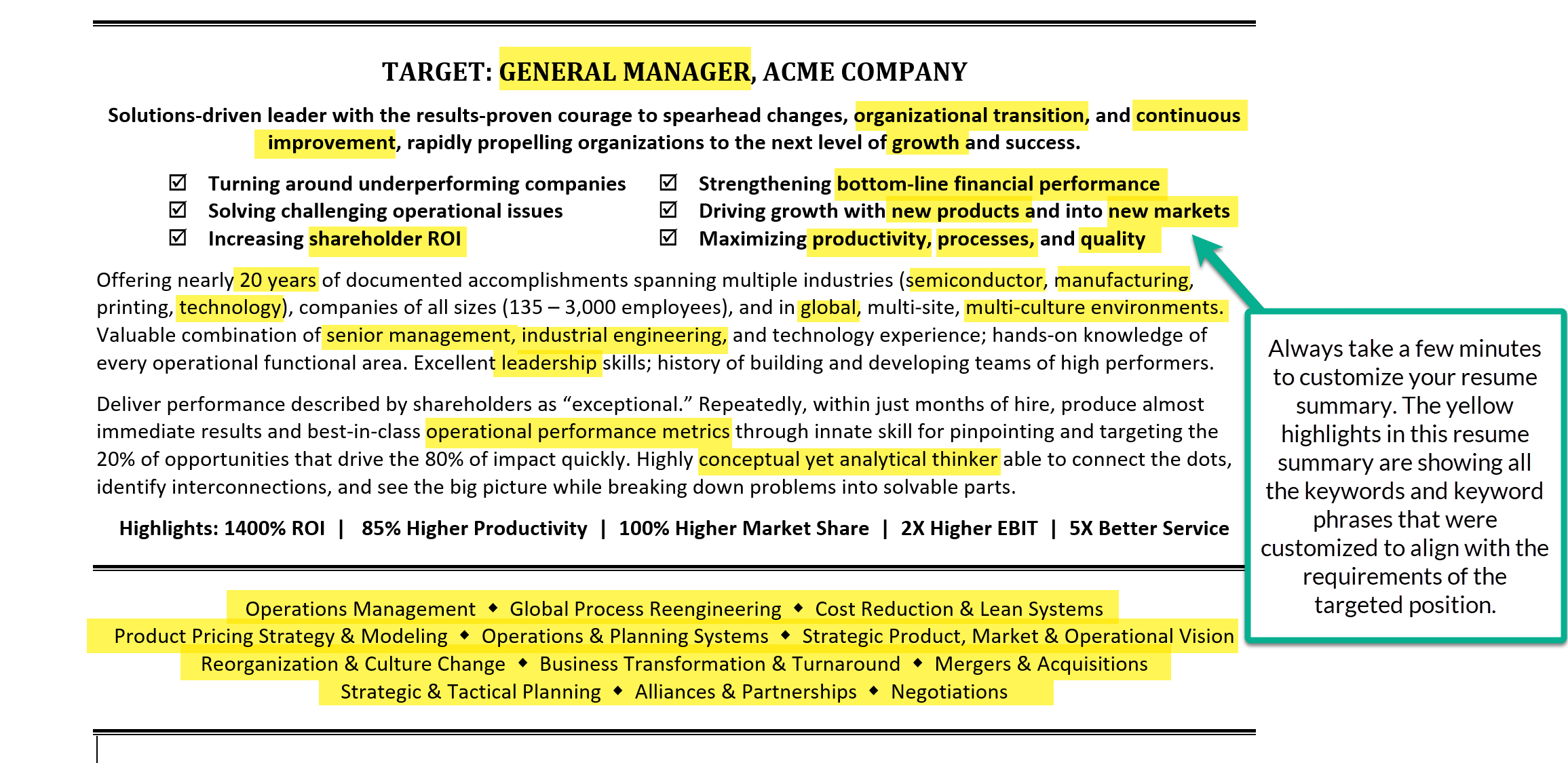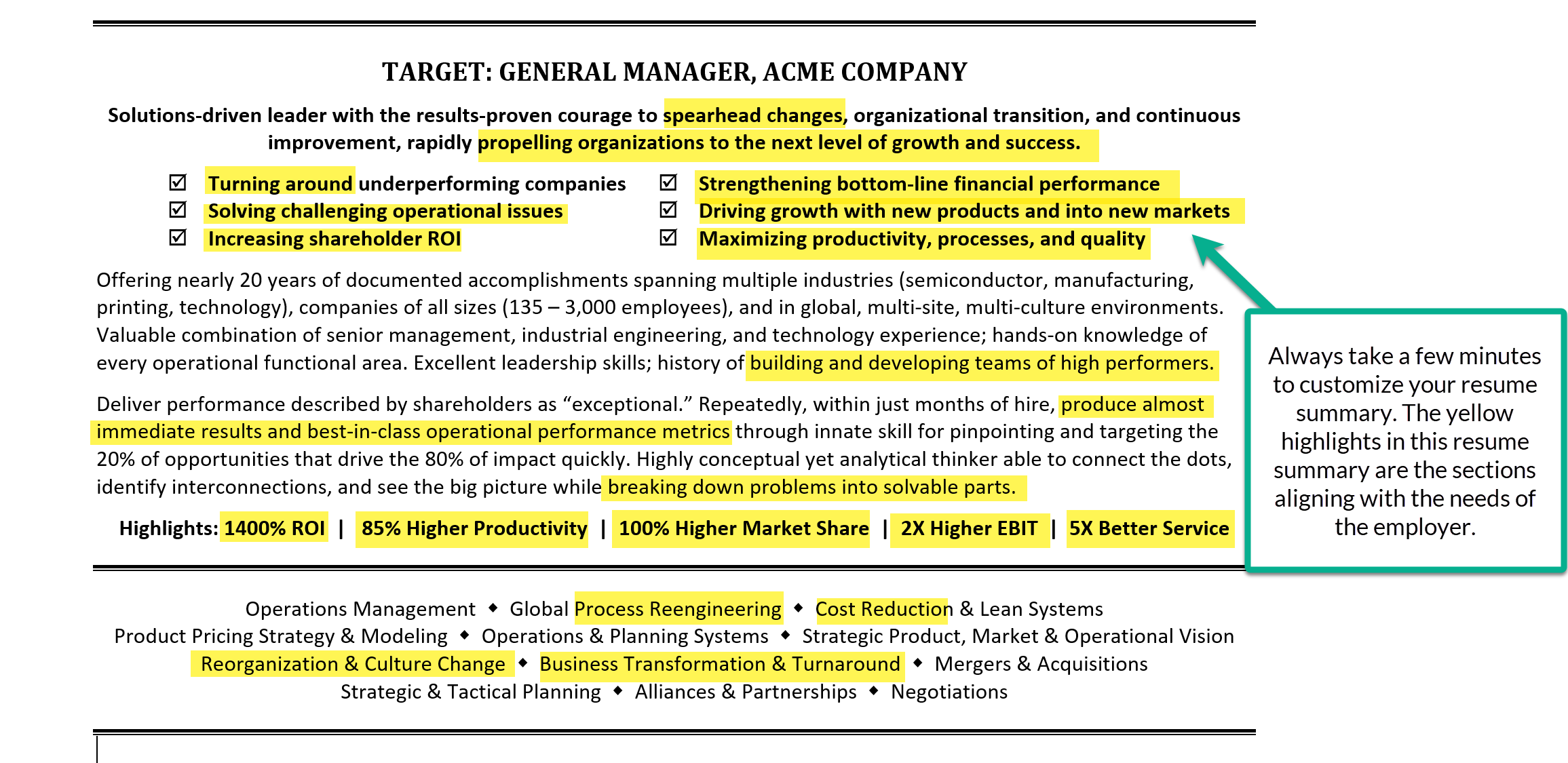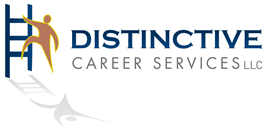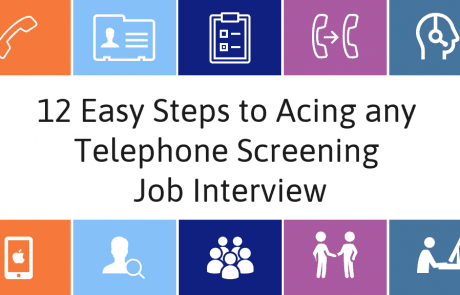
Customizing your resume is key to showing a potential employer that you are the right fit for the job. By taking the time to customize your resume, you are indicating your interest in the position and demonstrating that you have the skills and experience the employer is seeking.
In other words, customizing your resume shows how your skills, experiences, and education align with what the employer hopes to find. This guide will help you navigate the customization process so that your resume makes a strong impression.
Virtually all Fortune 500 companies and a growing number of smaller companies use applicant tracking system (ATS) software to screen resumes. No matter how qualified you are, if you don’t customize your resume to match the qualifications sought by the employer, you could be less likely to be selected for an interview. Even if the company doesn’t use ATS software, customized resumes appeal more to human readers.
The process of customizing your resume starts with your professionally written resume. When your master resume is well-written, you should be able to customize it easily to target similar roles within the same industry. For example, you could customize your sales resume to focus on your expertise in selling different types of products or within various sectors. But you won’t be able to apply for an administrative management job using that same sales resume. Unfortunately, one size doesn’t fit all.
If you’re looking for a job, you know that tailoring your resume can make a big difference. The right keywords and phrases can help your resume get through the ATS and into the hands of the recruiter or hiring manager. This process doesn’t usually require a complete rewrite of your resume. Sometimes, just a few tweaks can improve your chances of getting your resume seen.
If you’re feeling overwhelmed by the thought of how to customize each resume, don’t worry – as long as you are starting with a strong, well-written resume as a master, even just a little customization goes a long way. Just remember to keep that unchanged master resume archived and use it to “save as” a new resume with a new name. Then, you will use this new document for your customizations.
And remember, prioritize quality over quantity. Instead of spending hours sending the same generic resume to every job opportunity you see, take the same amount of time to research the possibilities you find and narrow your list down to the top dozen or so that are the best match for you. Then customize your resume for these. Even though you’ll be sending fewer resumes, you’ll significantly increase your chances of getting an interview and ultimately landing the job.
Fast & Effective Resume Customizations
It is best if you always take the time to customize your resume. Even small changes can make a big difference. When you tailor your resume to each specific job using these fast and easy-to-make customizations, you can increase your chances of getting noticed, and it will only take 5-15 minutes each.
Customize Your Resume Focus Headline
One of the easiest and most important changes you can make is customizing your resume headline with the job title you are targeting.
For example, if your master resume has a headline at the top that says:
“Senior Manufacturing Operations Executive”

There is nothing wrong with this headline. It is a good, general-purpose resume headline that provides the general focus. But, if the title of the open job you are applying for is “Vice President of Operations” and is in the automotive manufacturing industry, change the headline to state this, as in this image:

It will be even more effective if you are very specific and customize your resume heading to include the name of the company, as in this image:

Customize Your Resume Summary
Next, read the job posting for which you are customizing your resume and highlight all the words that describe the soft and hard skills sought in a candidate. Also, highlight any words and phrases describing specific experiences the employer is seeking.
Now return to the summary section of your resume. The summary is often the first section of your resume that your recipient will read, and customizing it will help with ATS performance in addition to making it more attractive to the human reader. Your goal is to ensure that your resume summary calls out as many of the qualifications specified in the job announcement as possible. Try looking for opportunities in the text of the summary and also any listings of qualifications, as shown in the following resume summary example:

Tailor Your Resume to Address the Employer’s Needs
Companies don’t just hire employees. They invest in hiring employees to help them meet goals or solve problems. When they hire you, it is with the expectation that they will receive a return on that investment.
What returns do the employer you are targeting want? Try to find the answer to this question. You can often determine the goals for the position from reading the job announcement. Other times you will need to do more research and sometimes even make some educated assumptions.
Most commonly, employers are looking for employees who can help them make money, save money, save time, improve efficiency, or solve other problems.
After you have determined the motivators of the employer you are targeting, go back to your resume and tailor sections to include accomplishments that demonstrate you have the proven ability to deliver these returns. The following is the same resume summary as shown above, but this time the yellow highlights the words and phrases that speak directly to the needs of the targeted employer.

Customize the Body Content of Your Resume
At this point, you’ve gathered much information regarding the desired and required qualifications for the job you are targeting. With this, it is time to look through the body of the resume for opportunities to customize your resume.
Some suggestions include:
After completing this step, every part of your customized resume should be relevant to the job you will be applying for with it.
Be Honest
If you do not have the skills and experience requested in the job posting, the worst thing you can do is lie on your resume. Always be honest!
However, you can include “adjacent” experiences to enhance the keyword performance of your resume. For example, suppose you have experience working as a teacher in a childcare center but not in an elementary school classroom. Yet, you are applying for an elementary school teaching position. In this case, you could list your experience as “Possess two years’ experience providing childcare for children ages 3-5, equivalent to preschool classroom teaching experience.”
Final Thoughts
If you want to make sure human eyes see your resume in addition to performing well in an ATS, make sure you customize your resume for each job application. For example, use keywords relevant to the position you’re applying for and target your resume to address the employer’s specific needs. The tips we shared in this blog post will help you do just that quickly and easily.
Need help getting started? Our professional resume writing team can assist you with writing a master resume and with customizing your resume so it stands out from the competition. Schedule a free resume writing consultation today to get started on your journey to landing the job of your dreams!
Customizing a resume means adjusting it to fit a specific job role or company you’re applying for. This involves including relevant skills, experiences, and keywords that align with what the employer is looking for in the job description. By doing this, you can increase your chances of getting noticed by both human recruiters and automated software systems called Applicant Tracking Systems (ATS).
[/iee_faq_rich_snippet_item][iee_faq_rich_snippet_item question=”Why is customizing a resume important?”]Customizing your resume is important because it helps you stand out to employers. It shows that you have put in the effort to understand what they are looking for in a candidate, and that you possess the skills and experience needed for the job. Customized resumes are also more likely to pass through ATS software, which many companies use to screen resumes.
[/iee_faq_rich_snippet_item][iee_faq_rich_snippet_item question=”How do I start customizing my resume?”]The first step in customizing your resume is to have a well-written “master” resume. This is a complete resume that includes all your skills, experiences, and education. From this master resume, you can then make specific versions that target different job roles or companies. Be sure to include relevant keywords and phrases from the job description.
[/iee_faq_rich_snippet_item][iee_faq_rich_snippet_item question=”What parts of my resume should I customize?”]You should customize your resume headline, summary, and the body content. Your headline should include the job title you’re targeting. The summary should highlight your qualifications that match the job requirements. In the body, tailor your job descriptions, accomplishment bullets, and education section to align with the job you’re applying for.
[/iee_faq_rich_snippet_item][iee_faq_rich_snippet_item question=”Is it okay to lie on my resume to make it more attractive?”]No, you should always be honest on your resume. Lying about your skills or experiences can lead to negative consequences down the line, like losing your job. If you don’t have the exact experience requested, you can include related or “adjacent” experiences that could be seen as equivalent.
[/iee_faq_rich_snippet_item][iee_faq_rich_snippet_item question=”I feel overwhelmed with the process of customizing my resume. What should I do?”]If you feel overwhelmed, remember that you don’t need to rewrite your resume completely. Often, just a few tweaks to highlight specific skills and experiences can make a big difference. If you’re still finding it hard, there are professional services available that can assist you with writing and customizing your resume.
[/iee_faq_rich_snippet_item][iee_faq_rich_snippet_item question=”Do I need to customize my resume for each job application?”]Yes, it’s recommended to customize your resume for each job application. This is because each employer might be looking for slightly different skills and experiences in their ideal candidate. By customizing your resume for each job, you’re maximizing your chances of being seen as a great fit for the role.
[/iee_faq_rich_snippet_item][/iee_faq_rich_snippets]Frequently Asked Questions
What does it mean to customize a resume?
Customizing a resume means adjusting it to fit a specific job role or company you’re applying for. This involves including relevant skills, experiences, and keywords that align with what the employer is looking for in the job description. By doing this, you can increase your chances of getting noticed by both human recruiters and automated software systems called Applicant Tracking Systems (ATS).
Why is customizing a resume important?
Customizing your resume is important because it helps you stand out to employers. It shows that you have put in the effort to understand what they are looking for in a candidate, and that you possess the skills and experience needed for the job. Customized resumes are also more likely to pass through ATS software, which many companies use to screen resumes.
How do I start customizing my resume?
The first step in customizing your resume is to have a well-written “master” resume. This is a complete resume that includes all your skills, experiences, and education. From this master resume, you can then make specific versions that target different job roles or companies. Be sure to include relevant keywords and phrases from the job description.
What parts of my resume should I customize?
You should customize your resume headline, summary, and the body content. Your headline should include the job title you’re targeting. The summary should highlight your qualifications that match the job requirements. In the body, tailor your job descriptions, accomplishment bullets, and education section to align with the job you’re applying for.
Is it okay to lie on my resume to make it more attractive?
No, you should always be honest on your resume. Lying about your skills or experiences can lead to negative consequences down the line, like losing your job. If you don’t have the exact experience requested, you can include related or “adjacent” experiences that could be seen as equivalent.
I feel overwhelmed with the process of customizing my resume. What should I do?
If you feel overwhelmed, remember that you don’t need to rewrite your resume completely. Often, just a few tweaks to highlight specific skills and experiences can make a big difference. If you’re still finding it hard, there are professional services available that can assist you with writing and customizing your resume.
Do I need to customize my resume for each job application?
Yes, it’s recommended to customize your resume for each job application. This is because each employer might be looking for slightly different skills and experiences in their ideal candidate. By customizing your resume for each job, you’re maximizing your chances of being seen as a great fit for the role.









